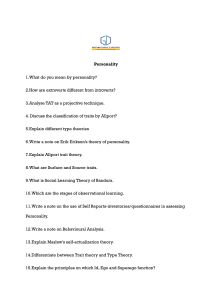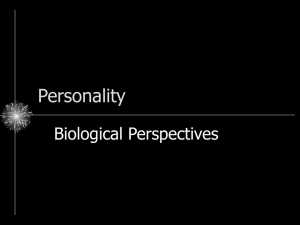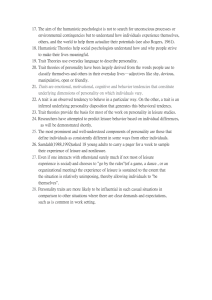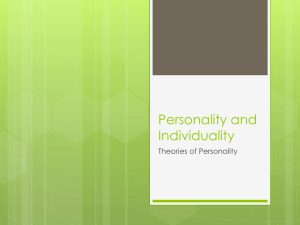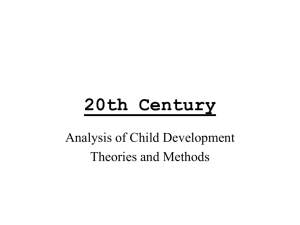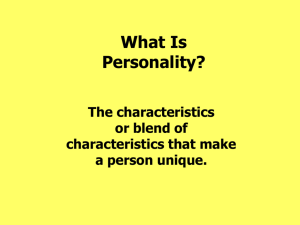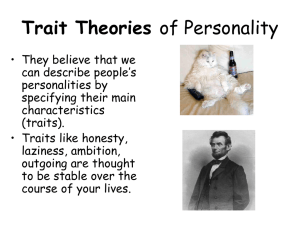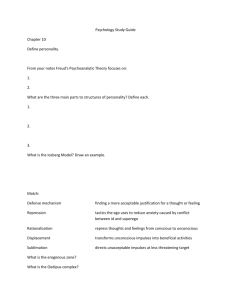Trait Theories
advertisement
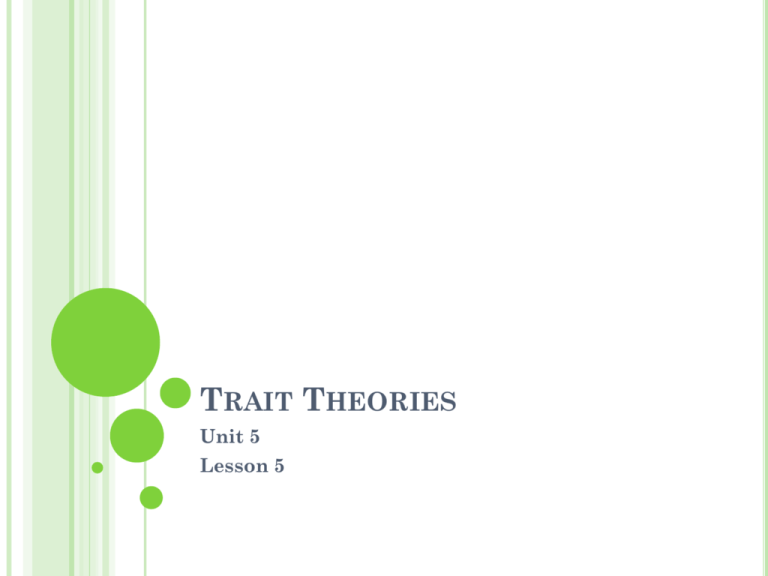
TRAIT THEORIES Unit 5 Lesson 5 OBJECTIVES Identify leading trait models of personality. Complete True Colors and Kiersey II Temperament Activities. WARM UP How do psychoanalytic, humanistic, and behavioral perspectives of personality differ? Psychoanalysts emphasize unconscious forces in dvpt of personality Humanists emphasize natural desire to be all we can be Behavioral (or socialcognitive) theories emphasize impact of learning and cognition on dvpt. REVIEW Behaviorists How do Skinner & Bandura differ? Who are the humanists? Bandura credited thought in learning, while Skinner said it was all reinforcement & punishment. Maslow – Hierarchy of Needs (Self-Actualized) Rogers – Self Concept (Real vs Ideal Self) and Fully Functioning Person TRAIT THEORIES Basic Assumptions Each person has unique pattern of stable, long lasting traits (internal characteristics). Gordon Allport Raymond Cattell 4500 personality traits, or “dispositions” Describes how we differ, not why Factor Analysis to reduce Allport’s traits to 16 “clusters” Degree to which we possess trait forms unique personality profile Root of all human behavior Hans Eysenck Hierarchy of traits Introversion-Extroversion, Emotional Stability, Psychoticism “BIG FIVE” THEORY Openness Conscientiousness Assertive, social, energetic Agreeableness Efficient, ethical, reliable Extroversion Unusual, original thought Considerate, trustworthy, warm Neuroticism Anxious, worrisome, vulnerable
